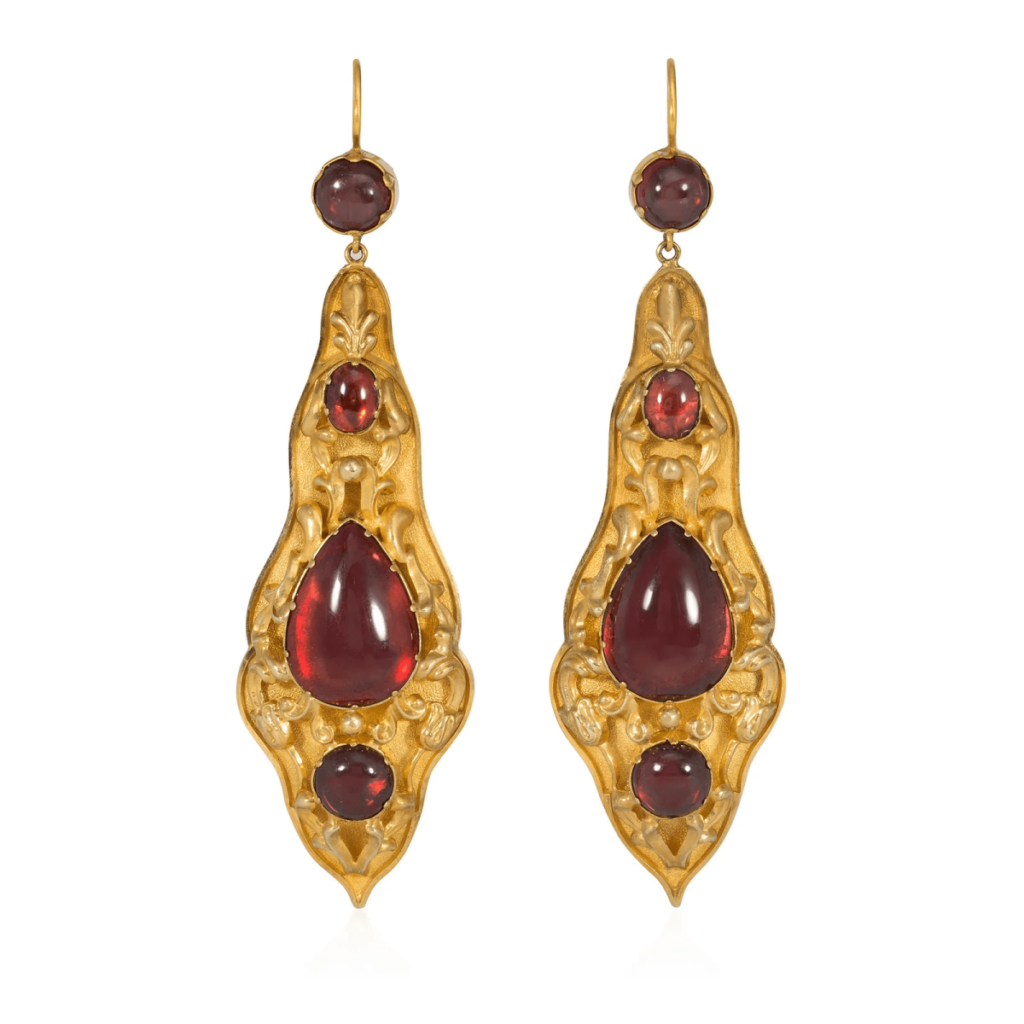Jewelry is always a work in progress, new tools and techniques develop over the years that allow makers to experiment and create fabulous new designs. Some methods continue to be used today, other more labor intensive practices have been lost to the years. Many are too expensive to make now due to labor costs, or there are so few artisans left who do those types of work that it is not commercially available. Vintage jewelry, sometimes crafted during a time when highly trained artisans made pieces by hand, offers a close-up look at some of these techniques that make period jewelry so special. From delicate filigree work to the hammered beauty of repoussè and the detailed patterns of granulation, antique and vintage jewelry showcases the jewelers art. Read on for more information about what these skills are and how they were used.
Filigree
Filigree is a technique that creates delicate lacy, open work in jewelry. It is a process that has been around since ancient times dating back to the Mesopotamians, although we tend to associate it more closely with Georgian, Victorian or Edwardian era jewelry. Filigree is made from very thin wires of gold, silver or platinum that are bent, twisted, or even braided and are then soldered together to create an elaborate pattern. It is a time consuming procedure that requires much patience and advanced skill in soldering. Early filigree was attached to a base, but when jewelry making techniques became more evolved the base was abandoned, creating the lacy looks that we are accustomed to seeing.
Granulation

Granulation is an ancient jewelry making method that dates back to the ancient Greeks and Etruscans, who were particularly skilled in this process. Granulation is the art of applying tiny gold beads to a surface to create a pattern, or frame, on a piece of jewelry. It is a complex and time intensive procedure. When the Etruscan society disappeared, granulation was lost. But it had a big revival during the mid 1800s when a cache of Etruscans jewelry was discovered during an archeological dig. The Castellani family, who were noted Italian goldsmiths and who were also involved in resurrecting ancient jewelry making techniques, began producing jewelry with granulation reviving the ancient art and sparking a desire for Etruscan Revival jewelry during the middle years (1860 – 1885) of the Victorian era.
Repoussé
Repoussé is another technique borrowed from the ancients. It is a seemingly simple process that involves hammering metal from the back to create a pattern on the front. Repoussé is from the French word that means to push. It is a multistep process that is still used today, often with chasing, which hammers metal on the front side to form a design, the two techniques are frequently used together to create more detailed designs. It is also a metal working form that has been used all over the world from the America’s to the Middle East for jewelry and decorative objects. Fun fact: The Statue of Liberty was made in sections from copper repoussé using wood forms to shape each piece as it was hammered.
If you see a piece of vintage jewelry with filigree, granulation or repoussé, you know the work is based on ancient jewelry making methods that few are replicating today. Knowing about the techniques that were used to make a piece of jewelry that you are wearing can be a great cocktail party conversation starter… if someone should happen to comment on your jewelry.
Top of Page: Gold pendant with granulation, Byzantium, 10th century, Cleveland Museum of Art, public domain, courtesy Wikimedia.
Authored by Amber Michelle


